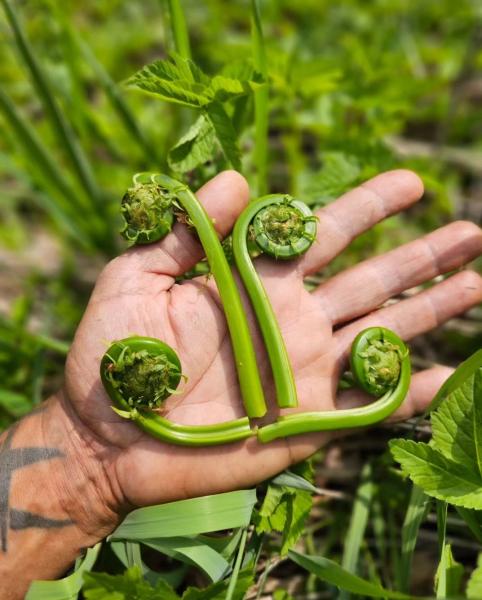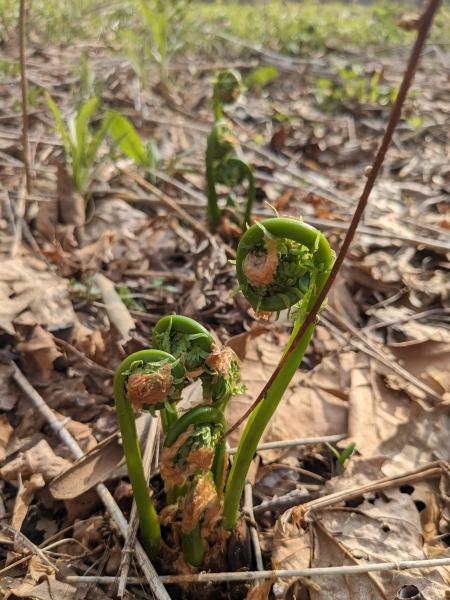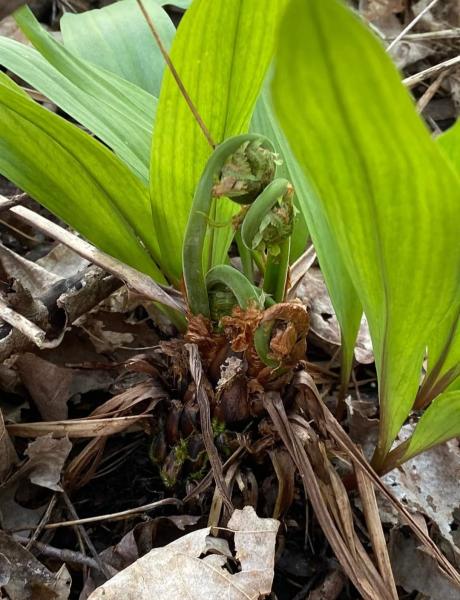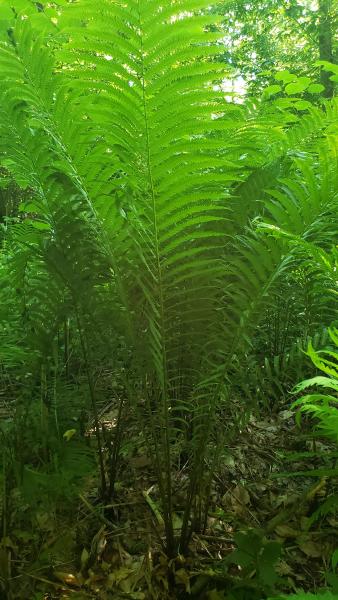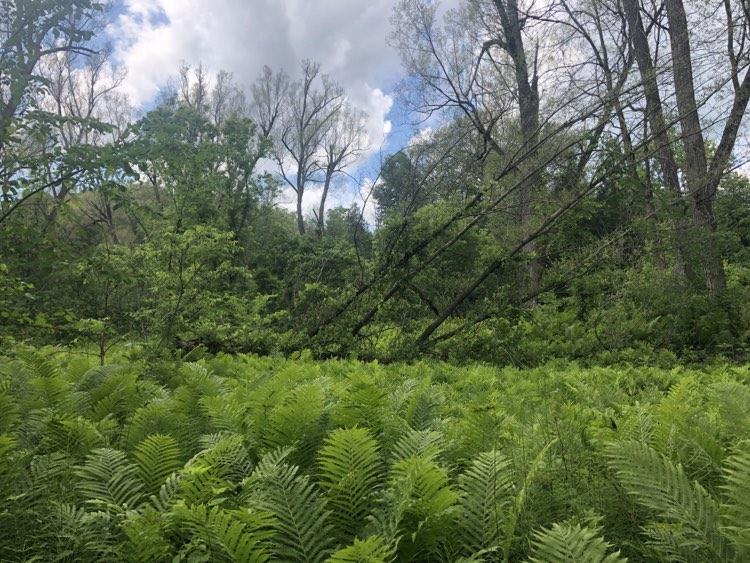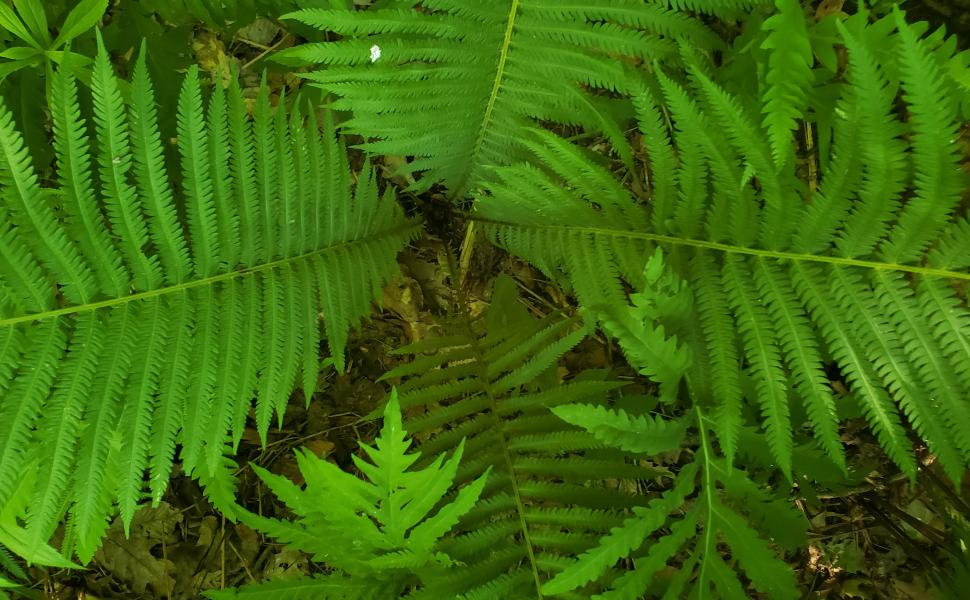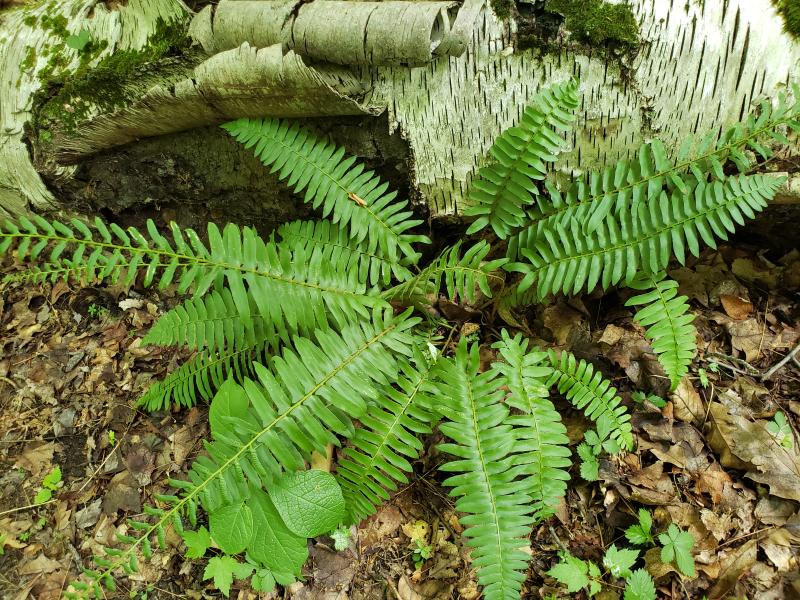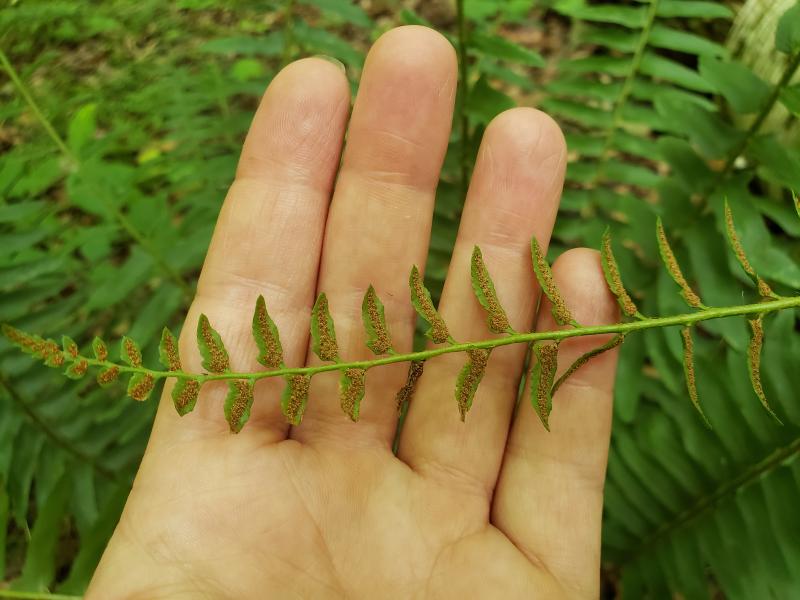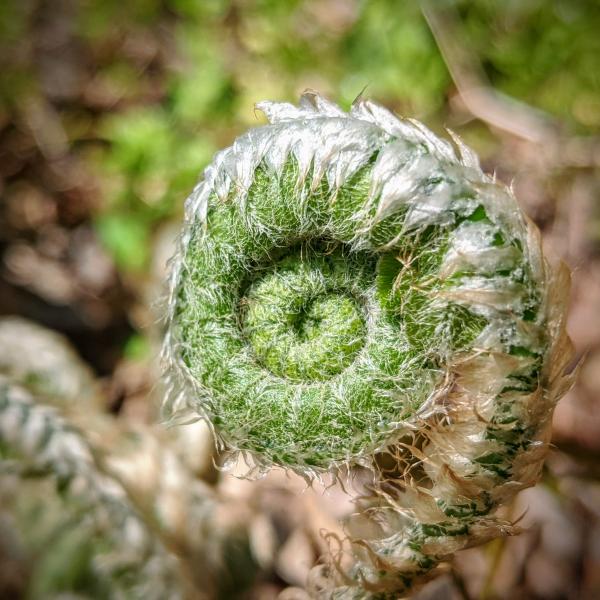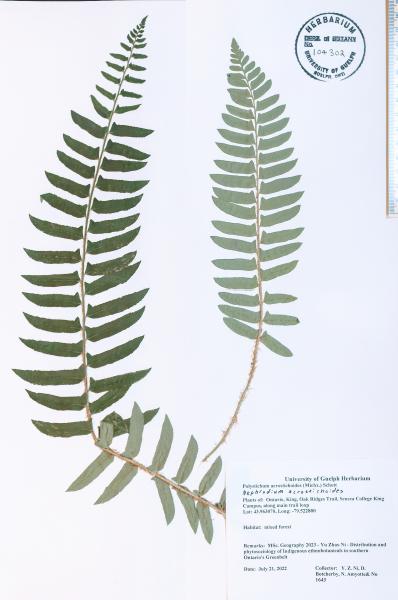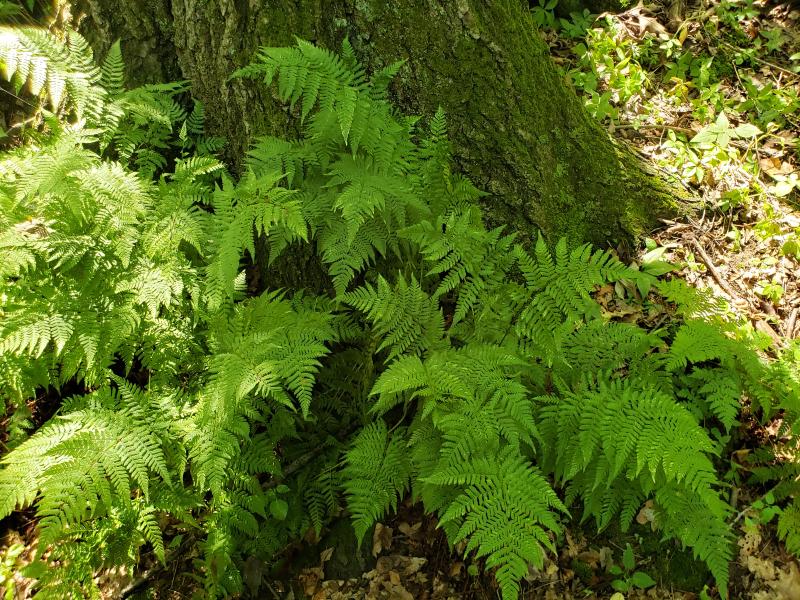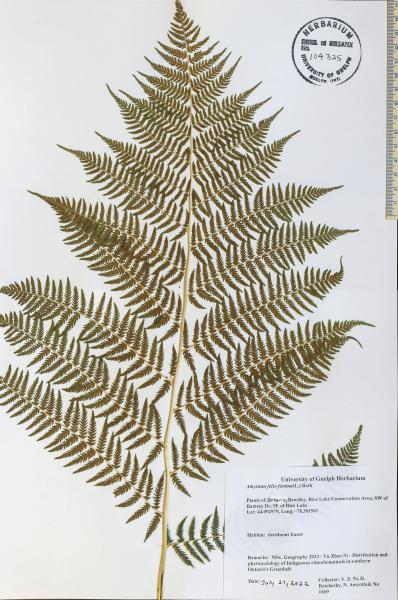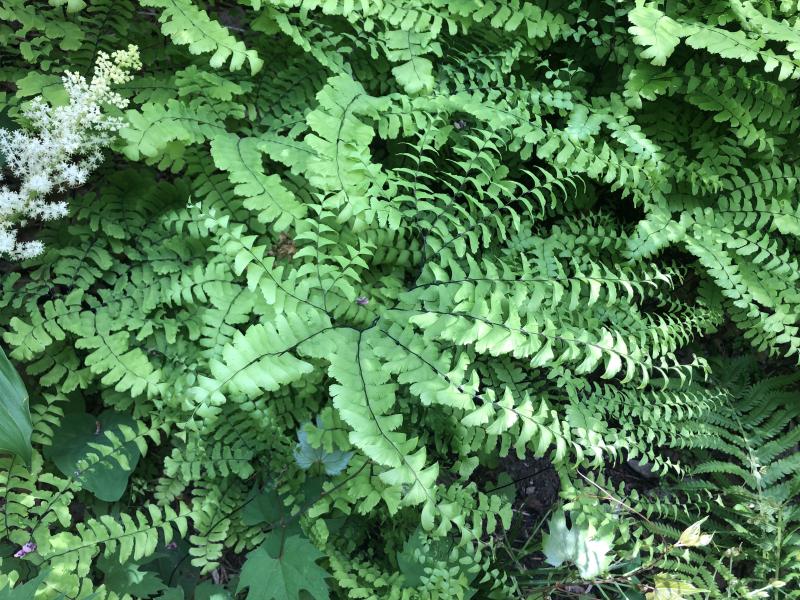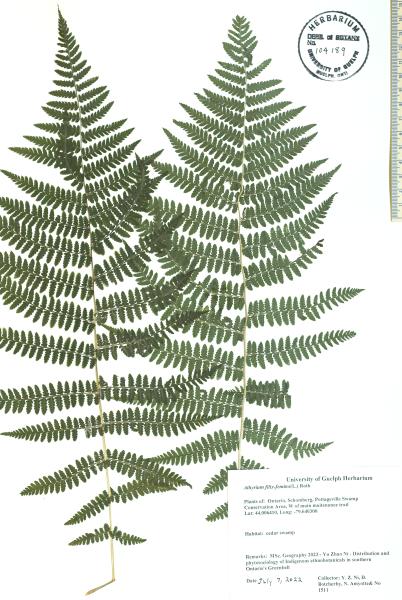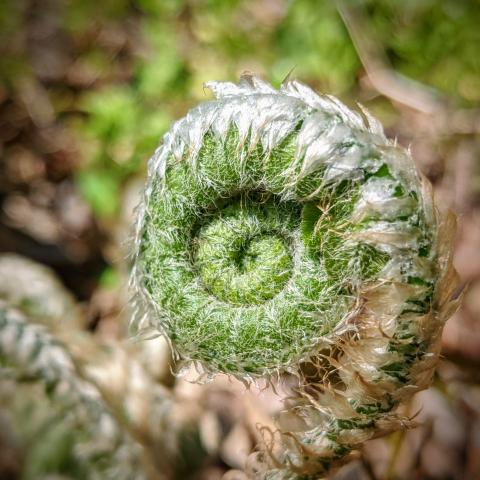
Names and Their Meanings
Bracken Fern - Pteridium aquilinum
Christmas Fern - Polystichum acrostichoides
Cinnamon Fern - Osmunda cinnamomea
Lady Fern - Athyrium felix-femina
Maidenhair Fern -
Ostrich Fern - Matteuccia struthiopteris
Sensitive Fern - Onoclea sensibilis
Bracken Fern
Conservation Status
S5 (Secure) in Ontario and New York
Christmas Fern
Conservation Status
S5 (Secure) in Ontario and New York; S4 (Apparently Secure) in Québec
Cinnamon Fern
Conservation Status
S5 (Secure) in Ontario, New York, and Québec
Lady Fern
Conservation Status
S5 (Secure) in Ontario
Maidenhair Fern
Conservation Status
S5 (Secure) in Ontario; S4 (Apparently Secure) in New York and Québec
Ostrich Fern
Conservation Status
S5 (Secure) in Ontario; S4 (Apparently Secure) in New York
Sensitive Fern
Conservation Status
S5 (Secure) in Ontario, New York, and Québec
Description
We were not able to include all of the ferns we surveyed here; notably, there were Intermediate and Marginal Wood ferns aplenty, and Holly Ferns up on the Bruce Peninsula. Ostrich Fern is the only fern that is edible as a spring fiddlehead vegetable. Indigenous peoples have collected and eaten these native ferns throughout their range and for as long as anyone can remember. F. W. Waugh documented use of Ostrich Fern fiddleheads as a vegetable at Six Nations of the Grand River in 1912; Katie Dybeau in Kahnawa:ke is the one who informed him about the medicinal uses of the roots of Cinnamon, Christmas, Maidenhair, and Sensitive Ferns. In other cases, the Indigenous names of the ferns give clues about their use, morphology, and forage: Bracken fern morphology gives it the appearance of lightning; Cinnamon, Bracken and Ladyfern were used as stuffing for bedding; and in Anishinaabemowin, a general word for ferns is “turkey food.”
